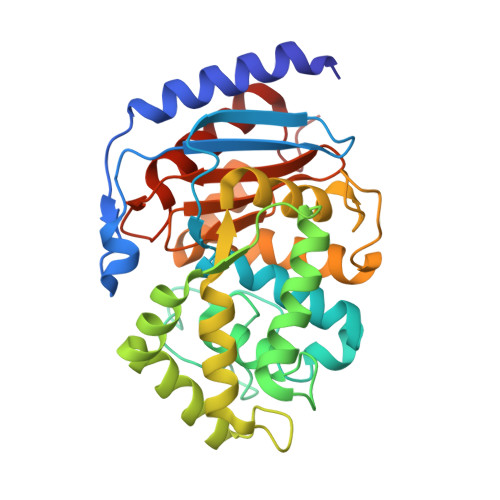Discovery of a Thiadiazole-Pyridazine-Based Allosteric Glutaminase 1 Inhibitor Series That Demonstrates Oral Bioavailability and Activity in Tumor Xenograft Models.
Finlay, M.R.V., Anderton, M., Bailey, A., Boyd, S., Brookfield, J., Cairnduff, C., Charles, M., Cheasty, A., Critchlow, S.E., Culshaw, J., Ekwuru, T., Hollingsworth, I., Jones, N., Leroux, F., Littleson, M., McCarron, H., McKelvie, J., Mooney, L., Nissink, J.W.M., Perkins, D., Powell, S., Quesada, M.J., Raubo, P., Sabin, V., Smith, J., Smith, P.D., Stark, A., Ting, A., Wang, P., Wilson, Z., Winter-Holt, J.J., Wood, J.M., Wrigley, G.L., Yu, G., Zhang, P.(2019) J Med Chem 62: 6540-6560
- PubMed: 31199640
- DOI: https://doi.org/10.1021/acs.jmedchem.9b00260
- Primary Citation of Related Structures:
8BSK, 8BSL, 8BSM, 8BSN - PubMed Abstract:
Tumors have evolved a variety of methods to reprogram conventional metabolic pathways to favor their own nutritional needs, including glutaminolysis, the first step of which is the hydrolysis of glutamine to glutamate by the amidohydrolase glutaminase 1 (GLS1). A GLS1 inhibitor could potentially target certain cancers by blocking the tumor cell's ability to produce glutamine-derived nutrients. Starting from the known GLS1 inhibitor bis-2-(5-phenylacetamido-1,2,4-thiadiazol-2-yl)ethyl sulfide, we describe the medicinal chemistry evolution of a series from lipophilic inhibitors with suboptimal physicochemical and pharmacokinetic properties to cell potent examples with reduced molecular weight and lipophilicity, leading to compounds with greatly improved oral exposure that demonstrate in vivo target engagement accompanied by activity in relevant disease models.
Organizational Affiliation:
Oncology, IMED Biotech Unit , AstraZeneca , 310, Cambridge Science Park, Milton Road , Cambridge CB4 0FZ , United Kingdom.
















